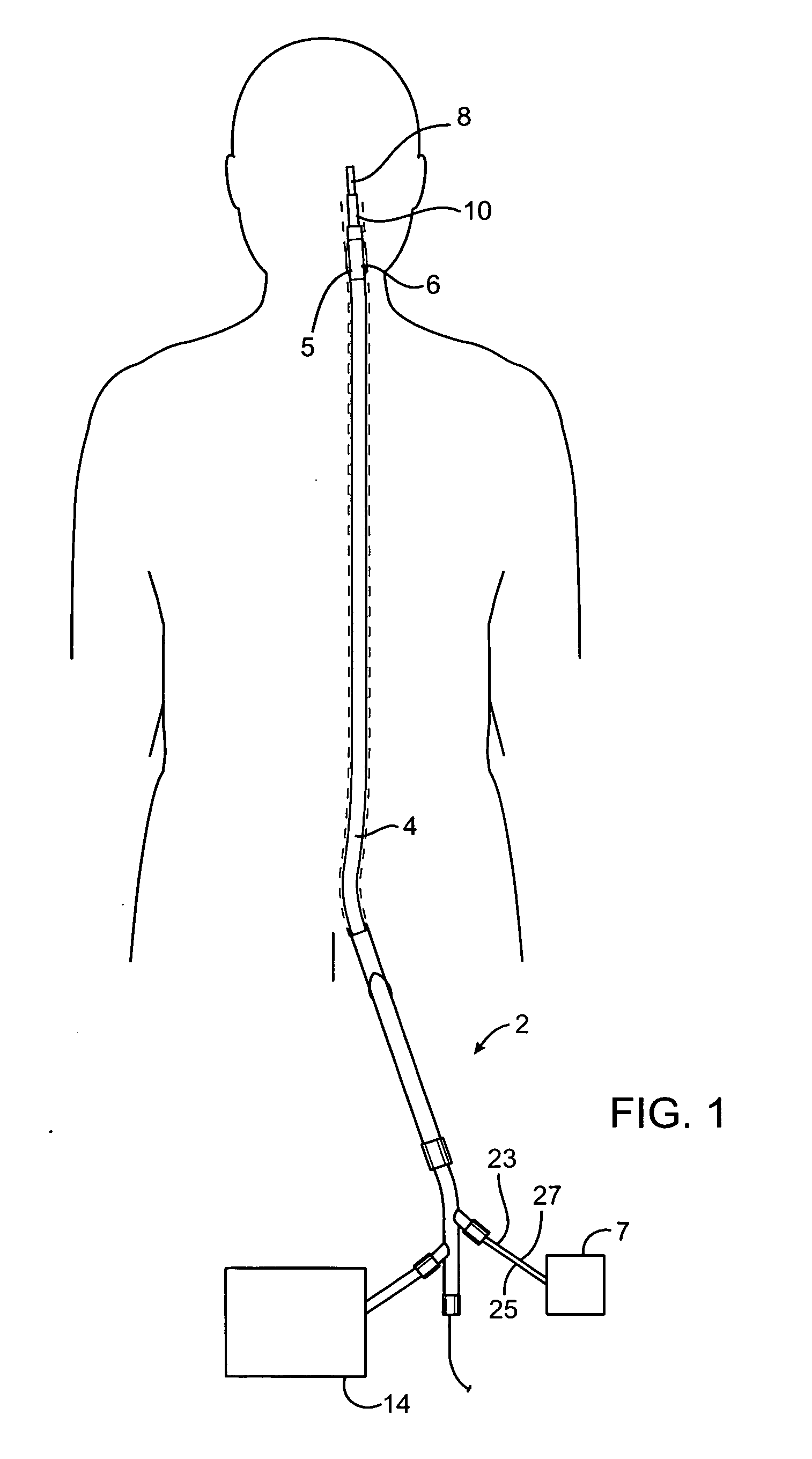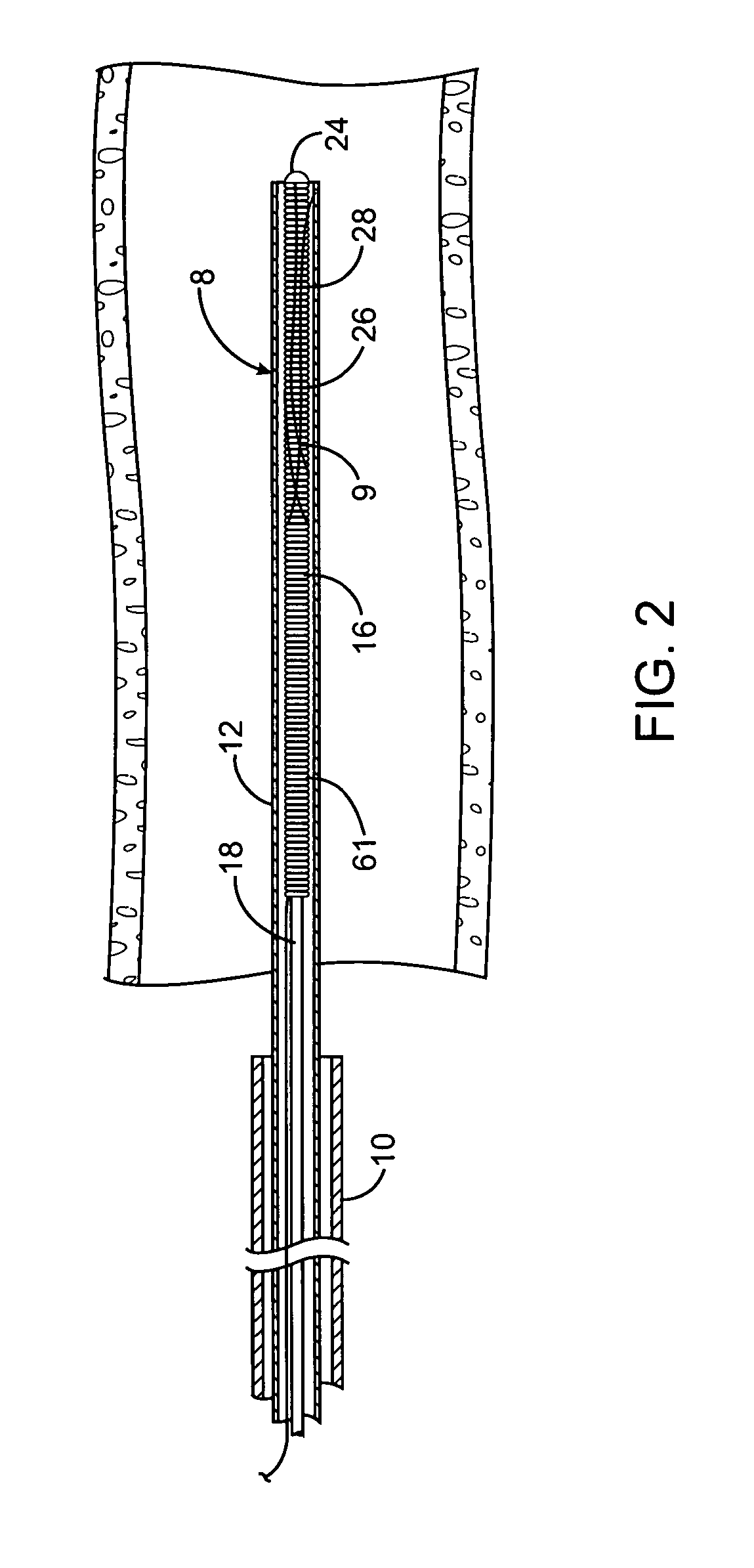Systems, methods and devices for removing obstructions from a blood vessel
a technology of obstruction and blood vessel, applied in the field of methods and devices for removing obstructions from blood vessels, can solve the problems that the interaction between the balloon catheter and the leading edge of the catheter may tend to shear off portions of the obstruction, and achieve the effects of reducing the likelihood of the obstruction, and reducing the risk of obstruction
- Summary
- Abstract
- Description
- Claims
- Application Information
AI Technical Summary
Benefits of technology
Problems solved by technology
Method used
Image
Examples
Embodiment Construction
[0081] Referring now to FIGS. 1-4, a system 2 for removing an obstruction is shown. A guide catheter 4 is advanced to a location proximal to an obstruction. When accessing the cerebral vasculature, for example, the guide catheter 4 is often positioned in the carotid or vertebral artery. Of course, the guide catheter 4 may not be necessary or may be positioned in any other suitable location depending upon the location of the obstruction. The guide catheter 4 preferably has a flow restricting element 6 which restricts or even stops blood flow through the vessel as described below. The flow restricting element 6 is preferably a balloon 5 coupled to a source of inflation fluid 7 which is used to inflate the balloon 5.
[0082] An obstruction removing device 8 is advanced through the guide catheter 4 to the obstruction. A microcatheter 10 may also be positioned within the guide catheter 4 to deliver the obstruction removing device 8 further into the vasculature. The obstruction removing de...
PUM
 Login to View More
Login to View More Abstract
Description
Claims
Application Information
 Login to View More
Login to View More - R&D
- Intellectual Property
- Life Sciences
- Materials
- Tech Scout
- Unparalleled Data Quality
- Higher Quality Content
- 60% Fewer Hallucinations
Browse by: Latest US Patents, China's latest patents, Technical Efficacy Thesaurus, Application Domain, Technology Topic, Popular Technical Reports.
© 2025 PatSnap. All rights reserved.Legal|Privacy policy|Modern Slavery Act Transparency Statement|Sitemap|About US| Contact US: help@patsnap.com



